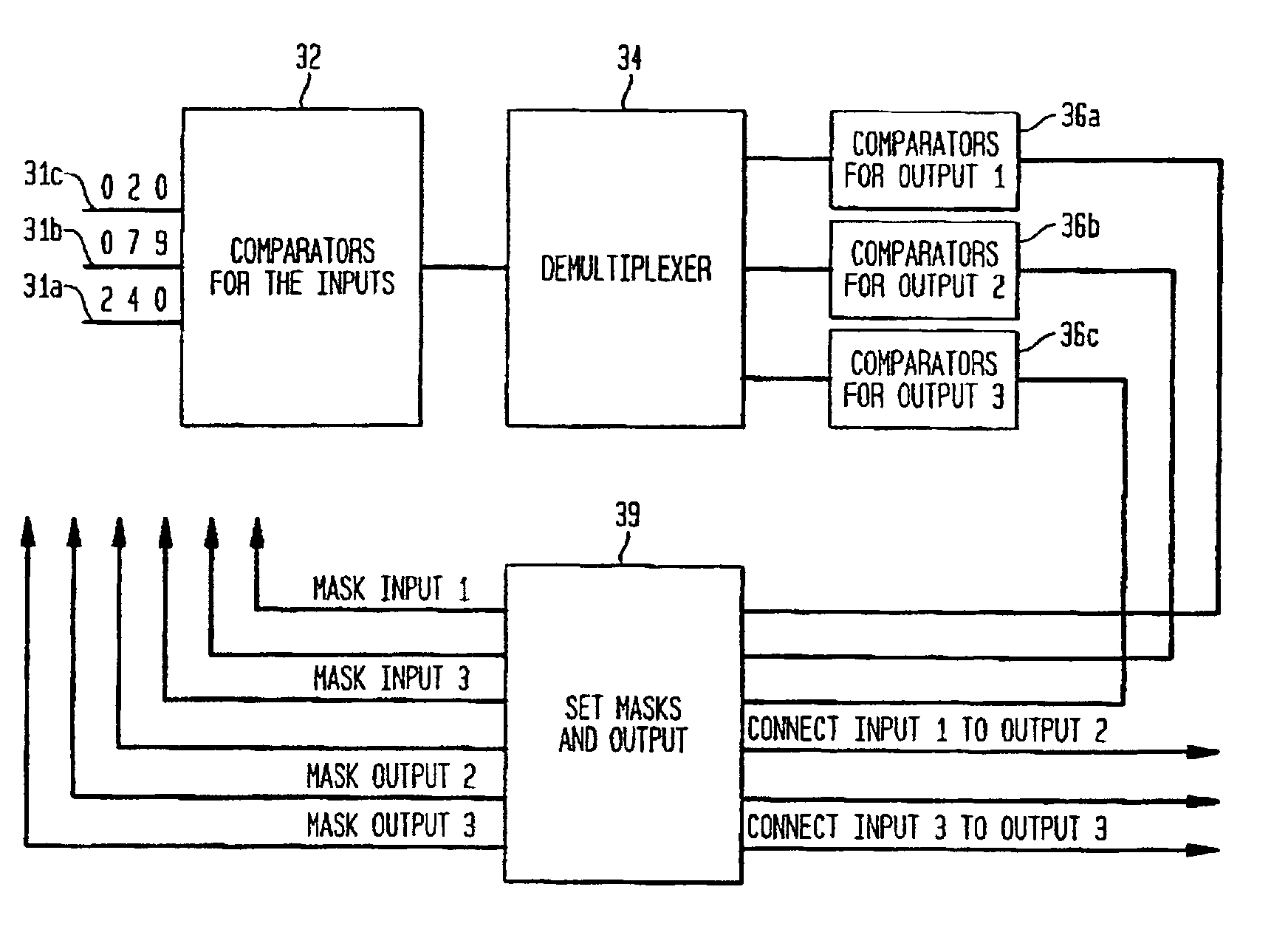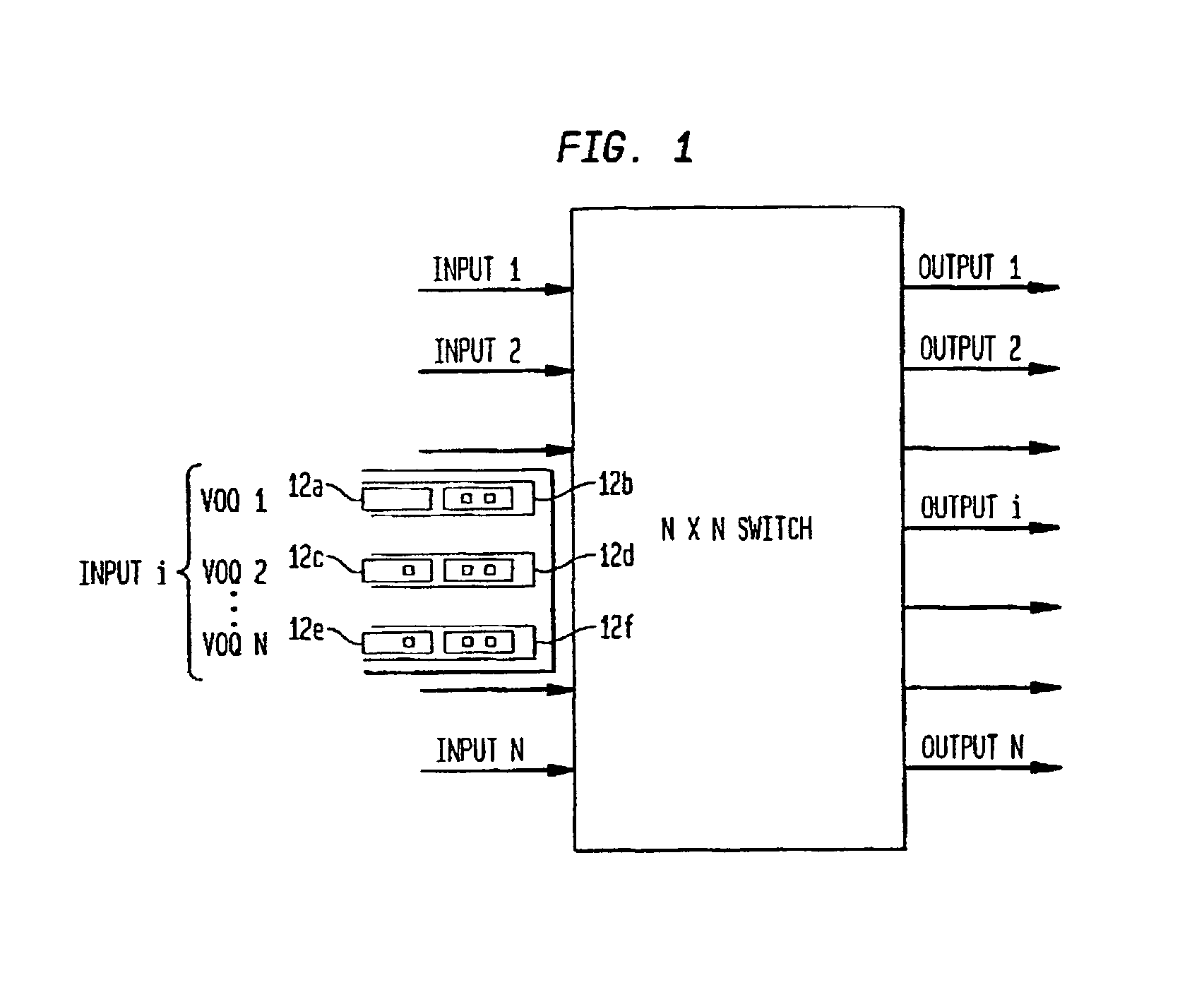Scalable weight-based terabit switch scheduling method
a terabit switch and scheduling method technology, applied in data switching networks, frequency-division multiplexes, instruments, etc., can solve the problems of high line rate, high cost, and difficulty in utilizing random approaches at high speed, and achieve the effect of being easily implementabl
- Summary
- Abstract
- Description
- Claims
- Application Information
AI Technical Summary
Benefits of technology
Problems solved by technology
Method used
Image
Examples
example
To illustrate the two hardware embodiments, suppose a weight matrix is given as shown in Table 1.
[0058]
TABLE 1Input 1Input 2Input 3Output 1020Output 2970Output 3042
[0059]Where each element of the weight matrix represents a weighting between an input-output pair. For example, the weighting between input 1 and output 2 is 9.
[0060]In accordance with the inventive scheduling method as described above, each unmatched input proposes to its highest weight unmatched output. In a first iteration of the scheduling method all inputs and outputs are initially unmatched. In accordance with the inventive scheduling method, input 1 proposes to its highest weight unmatched output, i.e., output 2, having a pair weighting of 9; input 2 proposes to its highest weight unmatched output, i.e., output 2 having a pair weight of 7, and input 3 proposes to its highest weight unmatched output i.e., output 3 having a pair weight of 2. Next, each output looks at its proposals and accepts the highest weight inpu...
PUM
 Login to View More
Login to View More Abstract
Description
Claims
Application Information
 Login to View More
Login to View More - R&D
- Intellectual Property
- Life Sciences
- Materials
- Tech Scout
- Unparalleled Data Quality
- Higher Quality Content
- 60% Fewer Hallucinations
Browse by: Latest US Patents, China's latest patents, Technical Efficacy Thesaurus, Application Domain, Technology Topic, Popular Technical Reports.
© 2025 PatSnap. All rights reserved.Legal|Privacy policy|Modern Slavery Act Transparency Statement|Sitemap|About US| Contact US: help@patsnap.com



